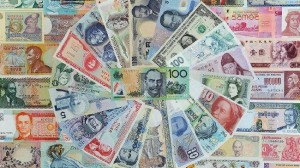 Australian dollar fell against its US counterpart on Monday, following the release of Chinese manufacturing PMI and ahead of the testimony by the Reserve Bank of Australia Governor Glenn Stevens and Federal Open Market Committee (FOMC) policy decision due on December 18th.
Australian dollar fell against its US counterpart on Monday, following the release of Chinese manufacturing PMI and ahead of the testimony by the Reserve Bank of Australia Governor Glenn Stevens and Federal Open Market Committee (FOMC) policy decision due on December 18th.
AUD/USD fell to a session low at 0.8923 at 1:45 GMT, also the pairs lowest point since September 1st, after which consolidation followed at 0.8946, losing 0.29% for the day. Support was likely to be received at September 1st low, 0.8904, while resistance was to be encountered at December 13th high, 0.8969.
Earlier on Monday it became clear that the preliminary reading of HSBC manufacturing index for China slowed down to lows unseen in three months, reaching 50.5 in December from a final value of 50.8 in November, while projections pointed that the index will advance to 51.0 in December. This data caused impact upon the Aussie, as China is Australias largest export partner.
Reserve Bank of Australia Governor Glenn Stevens said last week, that “it’s probably more preferable” to support Australian economy with a weaker currency than with further rate cuts. An exchange rate of 85 U.S. cents was “closer to the mark” than 95 cents, he also said in an interview with the Australian Financial Review. Stevens is expected to testify at a parliamentary economics committee on Wednesday.
“We could see some consolidation in the Aussie going into the Stevens testimony and the Fed meeting,” said Kara Ordway, a currency strategist at City Index Group Ltd. in Sydney, cited by Bloomberg News. “In terms of risk appetite against the U.S. dollar, if you were going to look at any currency to make some gains, you would really pick the Aussie because it has been so weak compared to all the other majors. It all depends on Fed.”
Traders saw a 16% probability that the central bank might reduce its benchmark interest rate from the current record low level of 2.50% at the next policy meeting scheduled in February.
Meanwhile, according to 34% of economists, participated in a Bloomberg survey on December 6th, the FOMC may begin to scale back its 85-billion-USD monthly asset purchases at the committee’s policy meeting starting tomorrow, rather than wait until January or March.
Such a view has been bolstered, after the US Department of Commerce reported that retail sales in the country rose considerably in November, as US consumers purchased automobiles and a range of other goods. Retail sales rose 0.7% last month, outstripping analysts’ projections of a 0.6% gain, while October’s sales result has been revised up to a 0.6% increase from a 0.4% increase previously.
Elsewhere, the Aussie was lower against the euro, with EUR/AUD cross gaining 0.45% on a daily basis to trade at 1.5408 at 9:57 GMT. AUD/NZD pair was down 0.10% today to trade at 1.0834 at 9:59 GMT. Australian dollar has dropped 12% during this year, marking the most considerable decline after the Japanese yen among the 10 developed-nation currencies, which are tracked by Bloomberg Correlation-Weighted Indexes.





